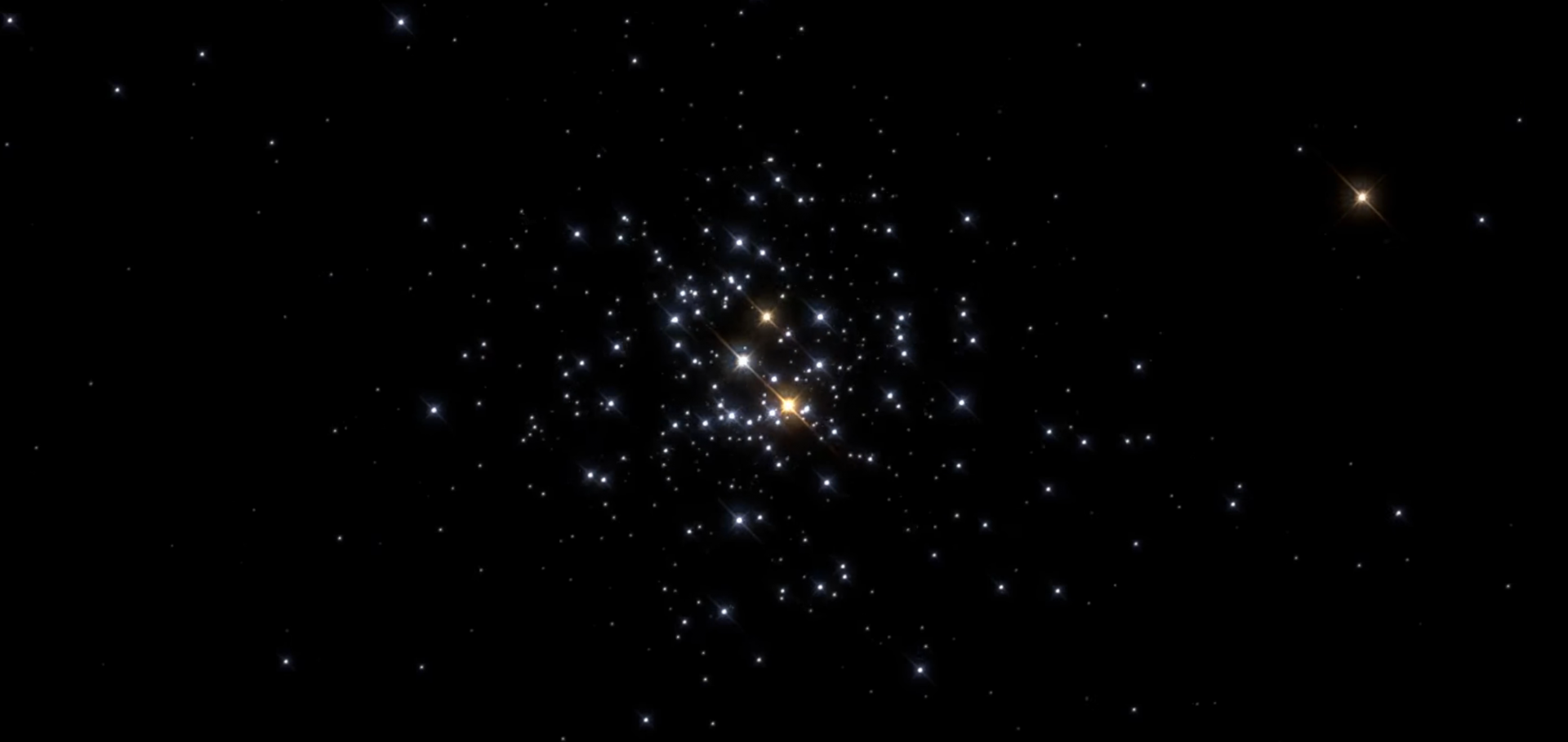Reversible time-step adaptation for the integration of few-body systems
Monthly Notices of the Royal Astronomical Society Oxford University Press 519:3 (2022) 3281-3291
Abstract:
The time-step criterion plays a crucial role in direct N-body codes. If not chosen carefully, it will cause a secular drift in the energy error. Shared, adaptive time-step criteria commonly adopt the minimum pairwise time-step, which suffers from discontinuities in the time evolution of the time-step. This has a large impact on the functioning of time-step symmetrization algorithms. We provide new demonstrations of previous findings that a smooth and weighted average over all pairwise time-steps in the N-body system, improves the level of energy conservation. Furthermore, we compare the performance of 27 different time-step criteria, by considering three methods for weighting time-steps and nine symmetrization methods. We present performance tests for strongly chaotic few-body systems, including unstable triples, giant planets in a resonant chain, and the current Solar System. We find that the harmonic symmetrization methods (methods A3 and B3 in our notation) are the most robust, in the sense that the symmetrized time-step remains close to the time-step function. Furthermore, based on our Solar System experiment, we find that our new weighting method based on direct pair-wise averaging (method W2 in our notation), is slightly preferred over the other methods.On the Jacobi capture origin of binaries with applications to the Earth-Moon system and black holes in galactic nuclei
Monthly Notices of the Royal Astronomical Society Oxford University Press 518:4 (2022) 5653-5669
Abstract:
Close encounters between two bodies in a disc often result in a single orbital deflection. However, within their Jacobi volumes, where the gravitational forces between the two bodies and the central body become competitive, temporary captures with multiple close encounters become possible outcomes: a Jacobi capture. We perform three-body simulations in order to characterize the dynamics of Jacobi captures in the plane. We find that the phase space structure resembles a Cantor-like set with a fractal dimension of about 0.4. The lifetime distribution decreases exponentially, while the distribution of the closest separation follows a power law with index 0.5. In our first application, we consider the Jacobi capture of the Moon. We demonstrate that both tidal captures and giant impacts are possible outcomes. The impact speed is well approximated by a parabolic encounter, while the impact angles follow that of a uniform beam on a circular target. Jacobi captures at larger heliocentric distances are more likely to result in tidal captures. In our second application, we find that Jacobi captures with gravitational wave dissipation can result in the formation of binary black holes in galactic nuclei. The eccentricity distribution is approximately superthermal and includes both prograde and retrograde orientations. We conclude that dissipative Jacobi captures form an efficient channel for binary formation, which motivates further research into establishing the universality of Jacobi captures across multiple astrophysical scales.A triple star origin for T Pyx and other short-period recurrent novae
Monthly Notices of the Royal Astronomical Society Oxford University Press 514:2 (2022) 1895-1907
Abstract:
Recurrent novae are star systems in which a massive white dwarf accretes material at such a high rate that it undergoes thermonuclear runaways every 1-100 yr. They are the only class of novae in which the white dwarf can grow in mass, making some of these systems strong Type Ia supernova progenitor candidates. Almost all known recurrent novae are long-period (Porb ? 12h) binary systems in which the requisite mass supply rate can be provided by an evolved (sub-)giant donor star. However, at least two recurrent novae are short-period (Porb ? 3h) binaries in which mass transfer would normally be driven by gravitational radiation at rates three to four orders of magnitude smaller than required. Here, we show that the prototype of this class - T Pyxidis - has a distant proper motion companion and therefore likely evolved from a hierarchical triple star system. Triple evolution can naturally produce exotic compact binaries as a result of three-body dynamics, either by Kozai-Lidov eccentricity cycles in dynamically stable systems or via mass-loss-induced dynamical instabilities. By numerically evolving triple progenitors with physically reasonable parameters forward in time, we show explicitly that the inner binary can become so eccentric that mass transfer is triggered at periastron, driving the secondary out of thermal equilibrium. We suggest that short-period recurrent novae likely evolved via this extreme state, explaining their departure from standard binary evolution tracks.Stellar triples on the edge: Comprehensive overview of the evolution of destabilised triples leading to stellar and binary exotica
Astronomy and Astrophysics European Southern Observatory 661:5 (2022) A61
Abstract:
Context. Hierarchical triple stars are ideal laboratories for studying the interplay between orbital dynamics and stellar evolution. Both mass loss from stellar winds and strong gravitational perturbations between the inner and outer orbit cooperate to destabilise triple systems.Aims. Our current understanding of the evolution of unstable triple systems is mainly built upon results from extensive binary-single scattering experiments. However, destabilised hierarchical triples cover a different region of phase space. Therefore, we aim to construct a comprehensive overview of the evolutionary pathways of destabilised triple-star systems.
Methods. Starting from generic initial conditions, we evolved an extensive set of hierarchical triples using the code TRES, combining secular dynamics and stellar evolution. We detected those triples that destabilise due to stellar winds and/or gravitational perturbations. Their evolution was continued with a direct N-body integrator coupled to stellar evolution.
Results. The majority of triples (54–69%) preserve their hierarchy throughout their evolution, which is in contradiction with the commonly adopted picture that unstable triples always experience a chaotic, democratic resonant interaction. The duration of the unstable phase was found to be longer than expected (103 − 4 crossing times, reaching up to millions), so that long-term stellar evolution effects cannot be neglected. The most probable outcome is dissolution of the triple into a single star and binary (42–45%). This occurs through the commonly known democratic channel, during which the initial hierarchy is lost and the lightest body usually escapes, but also through a hierarchical channel, during which the tertiary is ejected in a slingshot, independent of its mass. Collisions are common (13–24% of destabilised triples), and they mostly involve the two original inner binary components still on the main sequence (77–94%). This contradicts the idea that collisions with a giant during democratic encounters dominate (only 5–12%). Together with collisions in stable triples, we find that triple evolution is the dominant mechanism for stellar collisions in the Milky Way. Lastly, our simulations produce runaway and walk-away stars with speeds up to several tens of km/s, with a maximum of a few 100 km s−1. We suggest that destabilised triples can explain – or at least alleviate the tension behind – the origin of the observed (massive) runaway stars.
Conclusions. A promising indicator for distinguishing triples that will follow the democratic or hierarchical route, is the relative inclination between the inner and outer orbits. Its influence can be summed up in two rules of thumb: (1) prograde triples tend to evolve towards hierarchical collisions and ejections, and (2) retrograde triples tend to evolve towards democratic encounters and a loss of initial hierarchy, unless the system is compact, which experience collision preferentially. The trends found in this work complement those found previously from binary-single scattering experiments, and together they will help to generalise and improve our understanding on the evolution of unstable triple systems of various origins.
Chaos in self-gravitating many-body systems Lyapunov time dependence of N and the influence of general relativity
Astronomy and Astrophysics EDP Sciences 659 (2022) A86


